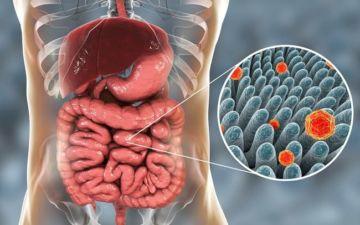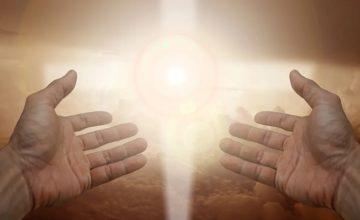
The mere mention of oriental medicine makes many people heed the following recommendations. Likewise, Yumeiho therapy, not the most popular, but still in demand direction, attracts a potential supporter precisely by its eastern roots. You will learn from this article about what kind of treatment it is, to whom it is indicated and contraindicated, why not all doctors share the enthusiastic reviews of the followers of the current.
What is Yumeiho Therapy
In almost all official sources, Yumeiho is called a health and wellness complex, which is represented by various types of massage. The Japanese method was developed by Masayuki Saionji: in 1975, Saionji began to study with the master of rehabilitation therapy Shuihi Ono. Combining new knowledge with the already existing (oriental massage, chiropractic) Sayonji developed his system of preventive and rehabilitative therapy, and it began to gain popularity.
Yumeiho, translated from Japanese, means “restoration of vitality.” In essence, the method is a single technological chain that includes 100 techniques for biodynamic correction of the organs of movement. The purpose of the correction is to eliminate the imbalance of the bones of the pelvis and spine. The Japanese method involves a contact effect, consisting in massage techniques and osteocorrection, and it also includes preventive gymnastics.

Simply put, the health-improving direction focuses on the pelvic bones – a key link in the human biosystem. And if you correctly influence this particular zone, according to the supporters of such healing, you can expect the restoration of vitality, and the flow of energy, and the disappearance of many unpleasant symptoms.
Indications for use
If the spine is in an imbalance, the consequences of this are expressed in the depression of the neurovascular bundles, and in the violation of blood flow and lymph flow. Even with the conduction of nerve impulses, problems can arise precisely because of violations of the musculoskeletal system. And if you start correcting, using Yumeiho massage, you can achieve significant results.
This method is shown when:
- the rehabilitation period after cardiovascular accidents (stroke, heart attack, hypertensive crisis);
- hypotension, hypertension, bradycardia and tachycardia;
- chronic or frequent sinusitis, bronchitis, asthma, logoneurosis;
- gastritis, hepatitis, cholecystitis;
- dyskinesia of the intestine or biliary tract;
- pathologies of the genitourinary system – enuresis, prostatitis, prostate adenoma, cystitis;
- infertility and disorders of the reproductive system, impotence, pathological menopause;
- scoliosis, osteochondrosis, arthritis, arthrosis, neuralgia;
- chronic fatigue syndrome, insomnia and depression;
- phobias, panic attacks;
- visual impairment;
- endocrine disorders.

According to the data on which the Yumeiho therapists rely, 98% of people can be diagnosed with displacement of the pelvic bones and cervical vertebrae. Some injuries are acquired at birth, others are facilitated by a sedentary lifestyle and other features associated with the social context of a person’s life. That is why many patients come to the Yumeiho therapist when the doctors of classical medicine simply begin to “heal” the problem.
Therapy is also carried out with children, even babies – but it should be understood that this method does not belong to classical evidence-based medicine, and such alternative treatment requires parental responsibility.
As long as you are responsible for the child, then any experiments on him can be interpreted as a crime. And if doctors do not recommend Yumeiho in a particular case, you should seriously think about it.
Contraindications
Yumeiho therapy also has contraindications, although the experts themselves assure that they are minimal and conditional, because their method is soft and in fact equates to massage.
Don’t contact Yumeiho:
- during an exacerbation of chronic diseases;
- in the presence of a current inflammatory process in the body (even with a common cold);
- with dermatitis;
- with diagnosed severe diseases of the circulatory system.
Let’s add here tuberculosis, HIV, severe hypertension, oncology, intervertebral hernias of more than 1 cm, skin trauma. Not all specialists mention these diagnoses, but alternative medicine carries serious risks for such diseases.

Doctor’s approval is required for Yumeiho during pregnancy
Pregnant women are a separate issue. Yumeiho experts assure that expectant mothers even benefit from such therapy. But still, we recommend that you definitely consult with a gynecologist leading a pregnancy, and abandon all uncomfortable and potentially dangerous experiments during gestation.
Applied methods
As already noted, a chiropractor who helps a patient has hundreds of special techniques. The doctor uses the technique of deep, relaxing massage: he kneads the muscles, acts on large nerve trunks and biologically active points. With the help of massage, the specialist corrects the position of the pelvic bones.
Important! The therapist works not only with his hands, but also with his legs, and even with the weight of his own body. If you attend a therapy session, the viewer may feel that the doctor is acting quite harshly, while the patient himself is relaxed and does not show anxiety.
What the therapist works with:
- muscles;
- bones;
- visceral zone.
Kneading muscles, affecting the joints and vertebrae, working with the visceral region of the abdomen, allowing you to relieve spasms and remove congestion – that’s what happens during the session.

Basic manipulations of Yumeiho therapy
It is believed that the Yumeiho therapist does not deal with symptoms. It acts on the body as a whole, trying to influence the cause of the disease. Its goal is to return the patient to the natural balance of the body, which will contribute to recovery.
Rules of conduct
And now more about how the session goes. Each session has a phased structure. It lasts from 45 to 120 minutes. It is carried out on a mat, on the floor. The patient needs to wear loose clothing (usually a tracksuit or something similar).
Phased session structure:
- Preparatory stage. Contained in the general relaxation of muscles, it plays the role of a warm-up for subsequent actions. Basic movements at this stage are reduced to the principles of oriental massage – that is, kneading and squeezing of muscle tissues using the shiatsu technique occurs.
- Key stage. On it, in fact, the reduction of the displaced pelvic bones is carried out. The doctor can use general-purpose techniques and specialized movements. Even at the preparatory stage, the therapist determines what kind of help the patient needs.
- The final stage. At this time, the patient is also active – he smoothly regains control over his own body.
How many sessions are needed depends on the request and the picture that the specialist sees. Treatment usually requires a course treatment. In one course – 12 sessions, you can visit a doctor every day. If the purpose of the patient’s visit is purely preventive, then 2-3 massages per month will be enough.
How the Yumeiho session goes can be found in this demo video.
The doctor will probably tell the client about the displacement of the pelvic bones at the first appointment. If it is shifted to the right, it is fraught with impaired motor function of the liver, gastrointestinal tract, hormonal imbalance. With a shift to the left, the work of the departments for which the sympathetic nervous system is responsible is disrupted. And this is heart rate, and respiratory organs, and obesity. Yumeiho massage should bring the body into balance, this is its goal in itself.
Patient Testimonials
It is always interesting to read the responses of people who have experienced this or that type of treatment for themselves.

Yumeiho therapy – real reviews:
Pavel VK: The Yumeiho massage helped me a lot to recover, it turned out to be an effective way to eliminate painful sensations. I found a specialist who himself is engaged in martial arts, he was able to help me as an athlete, because he knows firsthand about sports injuries and problems.
Julia VK: I have rheumatoid arthritis, I have been on medication for a long time, but I am looking for alternative ways. I went through vacuum massage, visceral, and now Yumeiho. I am very pleased with the results, they have improved significantly.
Of course, it is possible to find negative reviews, but in the case of positive responses, and in reverse statements there is subjectivity and, possibly, an advertising component.
Alternative opinion
Even if you browse the entire Internet, it is impossible to find detailed information from experienced neurologists, traumatologists, orthopedists regarding the Yumeiho method. The opinions of doctors who represent classical (Western) medicine differ. There are those who themselves send patients for massage to chiropractors, there are those who do not believe in the power of Yumeiho.
Why the method can harm the patient:
- the status of “therapist” is often assigned to themselves by persons without higher medical education;
- measuring diagnostics are not carried out;
- conclusions about the effectiveness are based only on the emotional and evaluative characteristics of the patient’s condition.
Like many similar trends, Yumeiho is built on philosophy, symbolism, and ancient techniques.
It is quite understandable that such a sacralization of treatment is liked by many patients, it does not cause anxiety, is not associated with stressful visits to the clinic, etc. But with this approach, not only the placebo effect can not be excluded, but also the loss of criticality, the refusal of the classical treatment, which is recommended by evidence-based medicine.
Effective treatment does not only imply comfort, gentle actions, and a complete rejection of classical medical instruments. As you choose your health regimen, don’t lose out on healthy skepticism.
Read the article: 3195


